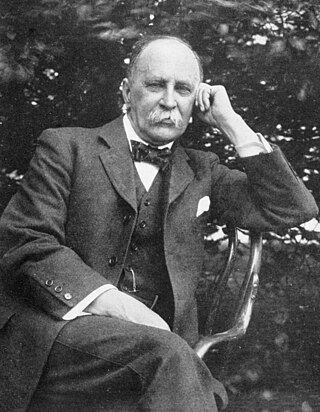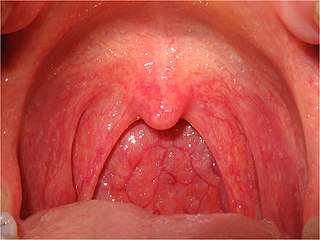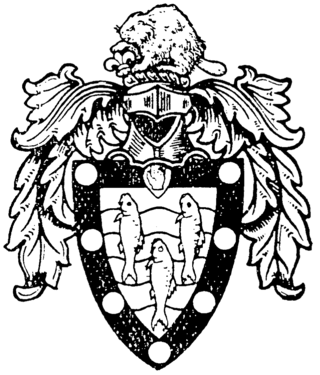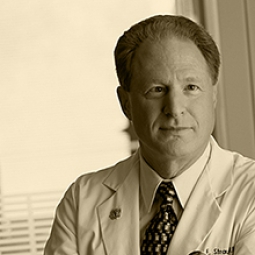
Sir Alexander Fleming was a Scottish physician and microbiologist, best known for discovering the world's first broadly effective antibiotic substance, which he named penicillin. His discovery in 1928 of what was later named benzylpenicillin from the mould Penicillium rubens has been described as the "single greatest victory ever achieved over disease". For this discovery, he shared the Nobel Prize in Physiology or Medicine in 1945 with Howard Florey and Ernst Boris Chain.

Syphilis is a sexually transmitted infection caused by the bacterium Treponema pallidum subspecies pallidum. The signs and symptoms of syphilis vary depending in which of the four stages it presents. The primary stage classically presents with a single chancre though there may be multiple sores. In secondary syphilis, a diffuse rash occurs, which frequently involves the palms of the hands and soles of the feet. There may also be sores in the mouth or vagina. In latent syphilis, which can last for years, there are few or no symptoms. In tertiary syphilis, there are gummas, neurological problems, or heart symptoms. Syphilis has been known as "the great imitator" as it may cause symptoms similar to many other diseases.

Streptococcal pharyngitis, also known as streptococcal sore throat, is pharyngitis caused by Streptococcus pyogenes, a gram-positive, group A streptococcus. Common symptoms include fever, sore throat, red tonsils, and enlarged lymph nodes in the front of the neck. A headache and nausea or vomiting may also occur. Some develop a sandpaper-like rash which is known as scarlet fever. Symptoms typically begin one to three days after exposure and last seven to ten days.

Sir William Osler, 1st Baronet, was a Canadian physician and one of the "Big Four" founding professors of Johns Hopkins Hospital. Osler created the first residency program for specialty training of physicians, and he was the first to bring medical students out of the lecture hall for bedside clinical training. He has frequently been described as the Father of Modern Medicine and one of the "greatest diagnosticians ever to wield a stethoscope". In addition to being a physician he was a bibliophile, historian, author, and renowned practical joker. He was passionate about medical libraries and medical history, having founded the History of Medicine Society, at the Royal Society of Medicine, London. He was also instrumental in founding the Medical Library Association of Great Britain and Ireland, and the Association of Medical Librarians along with three other people, including Margaret Charlton, the medical librarian of his alma mater, McGill University. He left his own large history of medicine library to McGill, where it became the Osler Library.

Pharyngitis is inflammation of the back of the throat, known as the pharynx. It typically results in a sore throat and fever. Other symptoms may include a runny nose, cough, headache, difficulty swallowing, swollen lymph nodes, and a hoarse voice. Symptoms usually last 3–5 days, but can be longer depending on cause. Complications can include sinusitis and acute otitis media. Pharyngitis is a type of upper respiratory tract infection.
Martin Henry Dawson was a Canadian researcher who made important contributions in the fields of infectious diseases.

Joseph Goldberger was an American physician and epidemiologist in the United States Public Health Service (PHS). As a public health official, he was an advocate for scientific and social recognition of the links between poverty and disease. His early work with arriving immigrants at Ellis Island made him a standout investigator for detecting infectious diseases and he became a well-known epidemiologist.

John P. McGovern was an American allergist, investor and philanthropist. He established the McGovern Allergy Clinic in Houston, Texas, created the Texas Allergy Research Foundation and the John P. McGovern Foundation, and co-founded the American Osler Society.

The Osler Club of London, founded in 1928, is a medical society with the purpose of encouraging the study of history of medicine, particularly amongst medical students, and to keep "green the memory of Sir William Osler". Membership in the club is open to medical professionals, medical students, persons associated with the history of medicine and in allied sciences.
Ray Fletcher Farquharson was a Canadian medical doctor, university professor, and medical researcher. Born in Claude, Ontario, he attended and taught at the University of Toronto for most of his life, and was trained and employed at Toronto General Hospital. With co-researcher Arthur Squires, Farquharson was responsible for the discovery of the Farquharson phenomenon, an important principle of endocrinology, which is that administering external hormones suppresses the natural production of that hormone.
Bennett Lorber is an American medical educator. In 2018 he became professor emeritus at the Lewis Katz School of Medicine at Temple University. An authority on the listeriosis bacterial infection in humans, he has been recognized for the quality of his clinical teaching and has received distinguished teacher awards from the Association of American Medical Colleges (2018) and the American College of Physicians (2013). He also received a lifetime achievement award from the Infectious Diseases Society of America (2003). He was president of the College of Physicians of Philadelphia between 2010 and 2012 and of the Anaerobe Society of the Americas between 2008 and 2010.

Thomas John "Jock" Murray is a Canadian neurologist, medical historian and author.

Stephen E. Straus was an American physician, immunologist, virologist and science administrator. He is particularly known for his research into human herpesviruses and chronic fatigue syndrome, and for his discovery of the autoimmune lymphoproliferative syndrome genetic disorder. He headed the Laboratory of Clinical Investigation of the National Institute of Allergy and Infectious Diseases, National Institutes of Health (NIH), and served as the founding director of the NIH's National Center for Complementary and Alternative Medicine.

Louis Westenra Sambon was an Italian-English physician who played important roles in understanding the causes (etiology) of diseases. He described many pathogenic protozoans, insects, and helminths including the name Schistosoma mansoni for a blood fluke. He was an authority on the classification of parasitic tongue worms called Pentastomida (Linguatulida), and one of the genus Sambonia is named after him.

The American Osler Society is an organisation dedicated to the history of medicine and focuses on the "life, teachings, and ethical example of Sir William Osler". It works in co-operation with the Osler Library of the History of Medicine at McGill University and consists of a group of physicians, medical historians, and other related professions united by "the common purpose of keeping alive the memory of Sir William Osler".
Bill Stone, was a nephrologist at Vanderbilt University Medical Center. He was head of the kidney department at the Nashville Veterans Affairs Medical Center, part of the Tennessee Valley Healthcare System, for over 45 years. There, in the 1970s, he began the first dialysis treatments that could be performed both in a healthcare setting and at home. During this time he helped work out how to administer safe doses of penicillin to people with kidney failure, who otherwise might develop toxic levels of penicillin in their blood.

Aequanimitas was one of Sir William Osler's most famous essays, delivered to new doctors in 1889 as his farewell address at the Pennsylvania School of Medicine, prior to his transfer to Johns Hopkins. It was published in the same year and in 1904 appeared in his collection of essays titled Aequanimitas with Other Addresses to Medical Students, Nurses and Practitioners of Medicine. A second edition was produced in 1906, and a third in 1932. In the essay, Osler advocates two qualities "imperturbability" and "equanimity", which he defined as "coolness and presence of mind under all circumstances".

Mark Edwin Silverman MD MACP FACC, was an American cardiologist, medical historian, medical educator and author of more than 200 medical articles and a number of books, who founded the cardiology program at Piedmont Hospital in Atlanta, Georgia.
Wesley William Spink was an American physician, medical school professor, college coach, and medical researcher. He was "an internationally recognized authority on infectious diseases and is credited with controlling the spread of brucellosis ".

















